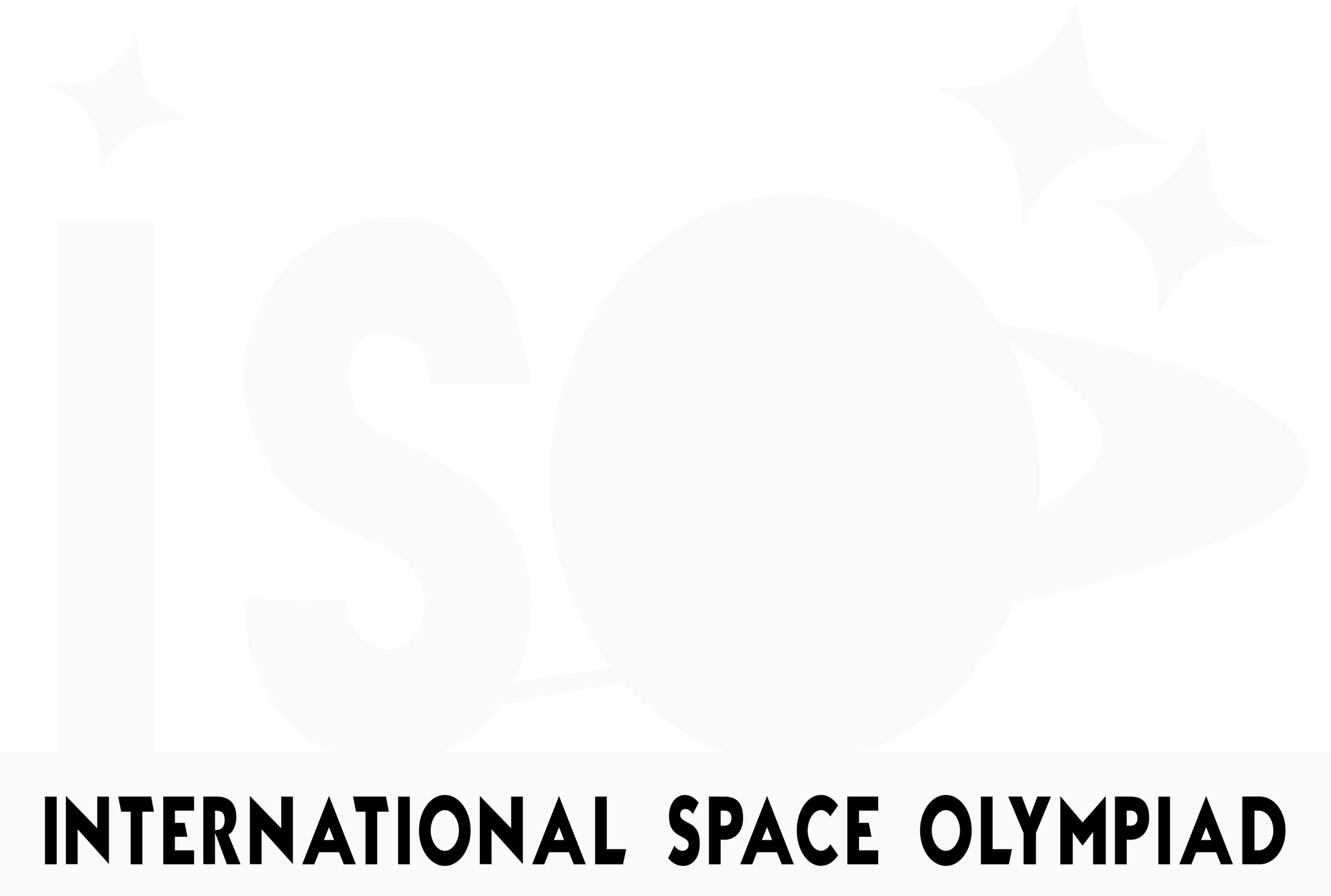International Space Olympiad 2025
SYLLABUS
🚀 PRELIMINARY LEVEL
🌍 The Earth
- Structure of the atmosphere and its layers
- Earth’s orbit and axial tilt
- Daily phenomena: Rising and setting of the Sun and other stars
- Yearly phenomena: Seasonal variations
🌙 The Moon
- Phases of the Moon
- Tides and their relation to Moon and Sun
- Formation of the Moon
🌞 The Solar System and Beyond
- Sun and the planets – key features
- Asteroids, comets, and dwarf planets
- Our nearest stars
- The Milky Way galaxy
- Local Group of galaxies
- Large-scale structure of the Universe
🔭 Measurements in Astrophysics
- Distance measurements: Parallax, Standard candles
- Velocity measurements: Doppler effect, red and blue shifts
- Chemical composition: Spectroscopy and dispersion of light
🌠 INTERMEDIATE LEVEL
⭐ Astrophysics of Stars
- Sun: Energy production (nuclear fusion), structure, and life cycle
- Stellar evolution: From birth to death
- High-mass star evolution: Supernovae, neutron stars, and black holes
🪐 Exoplanets
- What are exoplanets?
- Detection methods: Transit method, Radial velocity, Direct imaging, Microlensing
- Habitable zones and types of exoplanets
👽 Search for Extraterrestrial Intelligence (SETI)
- Possibility of life beyond Earth
- Methods of searching for extraterrestrial signals
- Technosignatures and biosignatures
- Drake Equation
🌌 Cosmology
- Hubble’s Law and the expanding universe
- The Big Bang theory
- Cosmic Microwave Background (CMB) radiation
- Dark matter and dark energy
🛰️ FINAL LEVEL
🚀 Space Missions and Satellites
- Types of space missions: Fly-by, Orbiter, Impactor, Lander, Rover, Sample return, Crewed missions – with key examples (e.g., Voyager, Mars rovers, Artemis, OSIRIS-REx)
- Satellites:
- By orbit: LEO, MEO, GEO, Polar, Sun-synchronous
- By use: Communication, Navigation, Weather, Scientific, Military – with examples
🔧 Rocketry and Orbits
- Newton’s Third Law of Motion and its application in rocketry
- The Rocket Equation (Tsiolkovsky’s Equation)
- Types of orbits and orbital maneuvers
- Launch vehicles and propulsion types
🔭 Telescopes and Observatories
- Types of telescopes: Optical, Radio, Infrared, X-ray, Gamma-ray
- Classification based on observing wavelength and technology (reflecting, refracting, radio dishes, etc.)
- Major space telescopes: Hubble, JWST, Chandra, Spitzer
- Ground-based observatories: VLT, ALMA, GMRT
- Gravitational wave observatories: LIGO, Virgo
- Neutrino observatories: IceCube, Super-Kamiokande
- Cosmic ray observatories: Pierre Auger, HAWC
📜 History of Space Exploration
- General Timeline of Space Exploration
- Overview of major space agencies: NASA, ESA, ISRO, Roscosmos, CNSA, JAXA
- Space technology spinoffs and their applications on Earth

